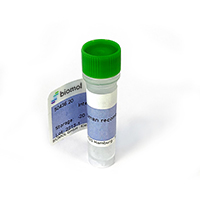Cookie preferences
This website uses cookies, which are necessary for the technical operation of the website and are always set. Other cookies, which increase the comfort when using this website, are used for direct advertising or to facilitate interaction with other websites and social networks, are only set with your consent.
Configuration
Technically required
These cookies are necessary for the basic functions of the shop.
"Allow all cookies" cookie
"Decline all cookies" cookie
CSRF token
Cookie preferences
Currency change
Customer-specific caching
FACT-Finder tracking
Individual prices
Selected shop
Session
Comfort functions
These cookies are used to make the shopping experience even more appealing, for example for the recognition of the visitor.
Note
Show the facebook fanpage in the right blod sidebar
Statistics & Tracking
Affiliate program
Conversion and usertracking via Google Tag Manager
Track device being used

| Item number | Size | Datasheet | Manual | SDS | Delivery time | Quantity | Price |
|---|---|---|---|---|---|---|---|
| 145719.25 | 25 µg | - | - |
3 - 19 business days* |
682.00€
|
If you have any questions, please use our Contact Form.
You can also order by e-mail: info@biomol.com
Larger quantity required? Request bulk
You can also order by e-mail: info@biomol.com
Larger quantity required? Request bulk
Placenta growth factor (PlGF or PGF) is a member of the PDGF/VEGF family of growth factors that... more
Product information "PlGF-3, Recombinant, Human, aa19-221 (Placenta Growth Factor, PlGF, PGF)"
Placenta growth factor (PlGF or PGF) is a member of the PDGF/VEGF family of growth factors that share a conserved pattern of eight cysteines (1-3). Alternative splicing likely results in four human mature PlGF forms containing 131 (PlGF-1), 152 (PlGF2), 203 (PlGF-3), or 224 (PlGF-4) amino acids (aa) (1-3). The PlGF-3 form is limited to humans. PlGF-3 and PlGF-1 do not contain a heparin binding insert at the C-terminus (1, 2). Within the region shared with other PlGF isoforms (aa18-131), human PlGF-3 shares 68%, 66%, 96%, 96%, 87% and 77% aa sequence identity with mouse, rat, porcine, equine, canine and bovine PlGF, respectively. PlGF is mainly found as a variably glycosylated, secreted, 55-60kD, disulfide linked homodimer (1, 4). Mammalian cells expressing all forms of PlGF include villous trophoblasts and decidual cells, with smaller amounts in erythroblasts, keratinocytes and some endothelial cells (13, 5, 6). Circulating PlGF increases during pregnancy, reaching a peak in mid-gestation, this increase is attenuated in preeclampsia (7). However, deletion of PlGF in the mouse, which expresses only PlGF-2, does not affect development or reproduction (3, 8). Postnatally, mice lacking PlGF show impaired angiogenesis in response to ischemia (8). PlGF binds and signals through VEGF R1/Flt-1 and Neuropilins (some isoforms), but not VEGF R2/Flk-1/KDR (3, 8-10). In contrast, VEGF binds both VEGF R1 and R2, but signals mainly through the angiogenic receptor, VEGF R2. PlGF and VEGF therefore compete for binding to VEGF R1, resulting in a PlGF inhibition of VEGF/VEGF R1 binding coupled to a subsequent promotion of VEGF/VEGF R2-mediated angiogenesis (1, 3, 8, 9). However, PlGF (especially PlGF1) and some forms of VEGF can form dimers that can alter the angiogenic effect of VEGF on VEGF R2 (3, 4, 9). PlGF induces monocyte activation, migration, and production of inflammatory cytokines and VEGF (3). These activities facilitate wound and bone fracture healing, and also contribute to inflammation in active sickle cell disease and atherosclerosis (5, 6, 8, 11-14). Circulating PlGF often correlates with tumor stage and aggressiveness (3, 14, 15). Source: Recombinant protein corresponding to aa19-221 from human PlGF-3, fused to 6-his tag at C-terminal, NS0-derived. Molecular Weight: ~29kD, Endotoxin: <0.01EU/1ug (LAL method), Storage and Stability: Lyophilized powder may be stored at -20°C. Stable for 12 months at -20°C. Reconstitute in sterile buffer. Aliquot to avoid repeated freezing and thawing. Store at -20°C. Reconstituted product is stable for 12 months at -20°C. For maximum recovery of product, centrifuge the original vial after thawing and prior to removing the cap. Further dilutions can be made in assay buffer.
| Supplier: | United States Biological |
| Supplier-Nr: | 145719 |
Properties
| Conjugate: | No |
| Format: | Highly Purified |
Database Information
| UniProt ID : | P49763 | Matching products |
Handling & Safety
| Storage: | -20°C |
| Shipping: | +4°C (International: °C) |
Caution
Our products are for laboratory research use only: Not for administration to humans!
Our products are for laboratory research use only: Not for administration to humans!
Information about the product reference will follow.
more
You will get a certificate here
Viewed



